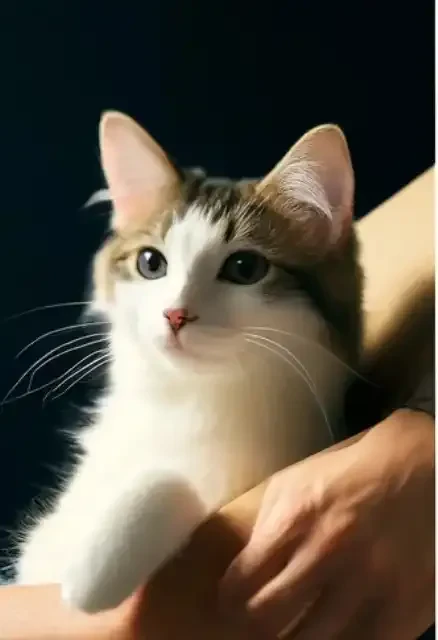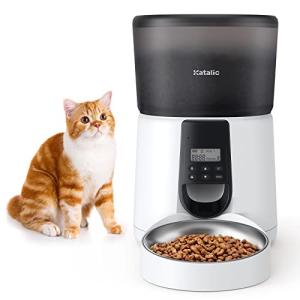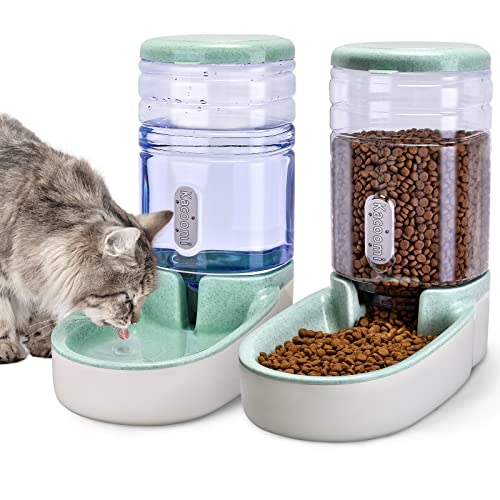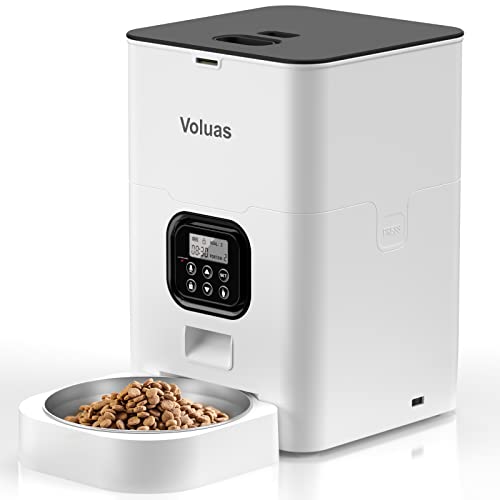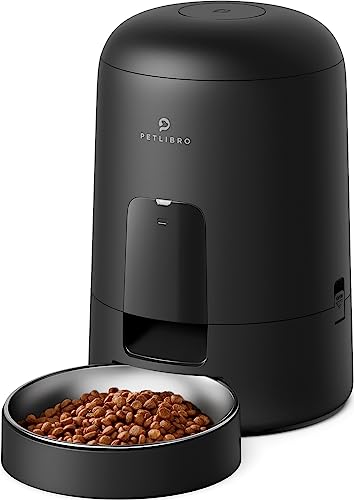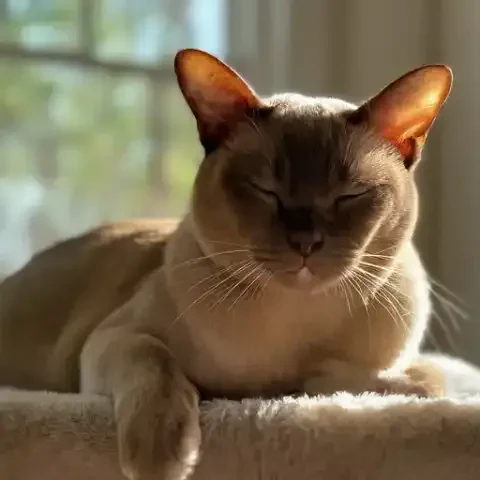The soft purr of a contented cat, the playful pounce that brightens a quiet moment, the gentle head nudge that conveys unwavering affection – these are just some of the everyday joys of sharing your life with a feline friend. These moments, these small interactions that weave the fabric of our bond with our cats, are precious and what we strive to nurture. But ensuring these moments continue, enriching both their lives and ours for years to come, relies on a fundamental understanding and consistent implementation of best practices for their overall health and happiness. It’s not merely enough to react when a problem arises; truly caring for a cat is about adopting a proactive approach, a continuous commitment to preventative care and a holistic understanding of feline wellbeing. A happy cat is fundamentally a healthy cat, and vice versa. Their physical health is intrinsically linked to their mental and emotional state, each aspect influencing and supporting the other. This article is designed to be your comprehensive guide, your roadmap to feline wellbeing. We will delve into essential best practices that span across all key areas of a cat's life, from the food they eat to the environment they inhabit, from the preventative health measures that safeguard them from illness to the mental enrichment that keeps their minds sharp and their spirits bright. Our goal is to equip you with actionable knowledge, practical tips, and a deeper understanding of your feline companion’s needs, empowering you to ensure they live long, healthy, and, most importantly, joyful lives. By embracing these best practices, you are not just caring for a pet; you are nurturing a cherished member of your family, fostering a bond built on love, trust, and a shared journey of wellbeing.
Optimal nutrition is truly the bedrock of a cat's health and happiness. Just like us, what our feline friends eat profoundly impacts their energy levels, their coat condition, their immune system strength, and their overall longevity. Understanding their specific nutritional needs and providing a high-quality diet is not just a kindness; it's a fundamental responsibility of cat ownership. Cats are obligate carnivores, a scientific term that simply means their bodies are biologically designed to thrive on a diet primarily composed of meat. Unlike dogs, which are more omnivorous, cats require specific nutrients that are most readily found in animal tissues. Protein is paramount; it's not just for muscle building but also for essential bodily functions. Perhaps even more critically, cats require taurine, an amino acid found exclusively in animal proteins. Taurine deficiency can lead to serious health problems, including heart disease and blindness. Therefore, when selecting cat food, quality should always be prioritized over cost. Look for cat food labels that clearly state "complete and balanced," a designation by the Association of American Feed Control Officials (AAFCO) that ensures the food meets the minimum nutritional requirements for cats at a specific life stage. Examine the ingredient list closely. High-quality cat foods will list named meat sources prominently as primary ingredients – “chicken,” “turkey,” “salmon,” not vague terms like “meat meal” or “poultry byproduct meal,” though quality meat meals can be acceptable. Consider your cat's life stage – kittens, adults, and senior cats have different nutritional needs, and foods are specifically formulated to meet these varying requirements. If your cat has specific health concerns, such as weight management issues or a sensitive stomach, specialized diets formulated for these conditions are available and often veterinarian-recommended. The long-standing debate of dry versus wet food is often discussed. Wet food, or canned food, has a higher moisture content, which is incredibly beneficial for cats as they often have a low thirst drive and can be prone to dehydration. Wet food can help support urinary tract health and kidney function. Dry food, or kibble, is often more convenient and can be left out for longer periods. Some argue that dry food can contribute to dental health by scraping teeth, though this is debated. Often, a combination of both wet and dry food is a good approach, leveraging the benefits of both types and offering variety to your cat's diet. Learning to decipher cat food labels is a crucial skill for any cat owner. Prioritize foods that are high in protein, with named meat sources listed as the primary ingredients. Look for moderate fat content and the inclusion of essential fatty acids, such as Omega-3 and Omega-6 fatty acids, which are beneficial for coat health and overall wellbeing. Conversely, be wary of foods that list excessive fillers like corn, wheat, or soy high up on the ingredient list. These ingredients are less digestible for cats and offer less nutritional value. Artificial colors, flavors, and preservatives should also be limited or avoided whenever possible. Be mindful of plant-based protein sources being heavily marketed as replacements for meat protein; while some plant protein can be present, cats primarily need animal protein sources. Portion control is equally critical in maintaining your cat's health. Free-feeding dry food, leaving kibble constantly available, is generally discouraged as it can easily lead to overeating and obesity, a significant health concern in cats. Instead, opt for measured meals, carefully following the feeding guidelines provided on the cat food packaging as a starting point. These guidelines are a starting point; you will need to adjust portion sizes based on your individual cat's age, activity level, metabolism, and body condition. Establish a regular feeding schedule, typically twice a day for adult cats, creating a routine they can rely on. Water is truly the elixir of life, and ensuring your cat is adequately hydrated is paramount. Cats, again, often don't drink enough water on their own, increasing their risk of urinary tract issues and kidney problems. Make fresh, clean water constantly available, offering multiple water sources around the house. Experiment with different types of water bowls – ceramic, stainless steel, or even consider a pet water fountain, as the movement and sound of running water often entice cats to drink more. Incorporating wet food into their diet is another excellent way to increase their overall water intake.
Treats can be a wonderful way to bond with your cat and reward good behavior, but moderation is absolutely key. Treats should only constitute a small percentage of your cat's daily calorie intake, not replacing balanced meals. Choose healthy treat options, opting for those that are low in calories and made with quality ingredients. Limit highly processed treats or those loaded with artificial flavors and fillers. Human food, while tempting to share with your feline companion, should be approached with extreme caution. Many common human foods are actually toxic to cats and can cause serious health problems. Chocolate, in all its forms, is dangerous to cats, as are onions and garlic, grapes and raisins, alcohol, caffeine, raw dough, and the artificial sweetener xylitol. Familiarize yourself with a comprehensive list of toxic foods and ensure these are kept completely out of your cat's reach. While sharing “people food” is generally discouraged, small amounts of plain, cooked, lean meat, like unseasoned chicken or fish, can be offered as an occasional treat if they are safe and plain, avoiding seasoned, fatty, or processed human foods. Weight management is an ongoing aspect of responsible cat care. Obesity in cats is a significant health risk, increasing their susceptibility to diabetes, arthritis, heart disease, and other serious conditions. Regularly monitor your cat's body condition score. You should be able to feel their ribs easily with a light touch, and they should have a visible waistline when viewed from above. If you are unsure how to assess body condition, your veterinarian can guide you. Adjust food portions as needed to maintain a healthy weight, taking into account their body condition and activity level. Encourage exercise and playtime to help them burn calories and maintain a healthy weight, which we will delve into further in the section on mental and emotional wellbeing. Finally, when making any dietary changes, especially switching to a new food, gradual transitions are essential. Sudden diet changes can wreak havoc on a cat's digestive system, leading to stomach upset, vomiting, and diarrhea. Transition slowly over a period of 7-10 days, gradually mixing increasing amounts of the new food with decreasing amounts of the old food until you have fully transitioned to the new diet. If your cat has any specific dietary needs due to allergies, sensitivities, or medical conditions, always consult with your veterinarian for specialized diet recommendations.
Proactive health care is not just about treating illness when it arises; it's about implementing preventative measures to safeguard your cat’s wellbeing and ensure a long and healthy life. Regular veterinary check-ups are the cornerstone of preventative care. Annual wellness exams are recommended for adult cats, and more frequent check-ups, perhaps twice a year, are often recommended for kittens and senior cats, who have different health needs. These routine check-ups are invaluable opportunities for early detection of potential health issues. During a wellness exam, your veterinarian will perform a thorough physical examination, assessing your cat's heart and lung function, weight, teeth and gums, coat condition, and overall physical health. Vaccinations will be updated, parasite screenings and preventative measures will be discussed, and you will have the opportunity to raise any concerns or questions you have about your cat's health. Early detection is key. Many feline diseases, if caught in their early stages, are often more effectively and less invasively treated, often leading to better outcomes and reduced long-term healthcare costs. Vaccinations are a critical component of preventative healthcare, protecting your cat from several serious and potentially fatal infectious diseases. Core vaccinations, generally recommended for all cats, include the FVRCP vaccine, which protects against Feline Viral Rhinotracheitis, Calicivirus, and Panleukopenia (feline distemper), and the Rabies vaccine, which is often legally required and protects against rabies, a zoonotic disease transmissible to humans. Non-core vaccinations are considered optional and are recommended based on your cat's lifestyle and risk factors. The Feline Leukemia Virus (FeLV) vaccine, for example, is often recommended for outdoor cats or cats who live in multi-cat households where FeLV exposure is more likely. Consult with your veterinarian to determine the most appropriate vaccination schedule for your cat, considering their age, lifestyle, and risk factors. Vaccination schedules typically involve a series of vaccinations for kittens, followed by booster vaccinations for adults to maintain immunity. Parasite prevention is another essential aspect of proactive healthcare. Cats are susceptible to a variety of parasites, both internal and external. Internal parasites include worms like roundworms, hookworms, and tapeworms, which can be transmitted through various routes, including ingestion of fleas or contaminated environments. Symptoms can range from mild digestive upset to more serious health issues. Deworming medications, prescribed by your veterinarian, are effective in treating and preventing worm infestations. External parasites, fleas and ticks, are not just nuisances; they can transmit diseases, cause skin irritation and allergies, and lead to anemia in severe infestations. Flea and tick preventative medications, available in topical and oral forms, are highly effective in protecting your cat. Heartworm disease, while perhaps less commonly discussed in cats than dogs, is a serious and potentially fatal condition, even for indoor cats, as it is transmitted through mosquito bites. Heartworm preventative medications, typically administered monthly, are crucial for protecting your cat, even if they are primarily indoors. Year-round parasite prevention is often recommended, even for indoor cats, as parasites can be brought into the home by other pets or even on our clothing. Your veterinarian can recommend the safest and most effective parasite preventative products for your cat, considering their lifestyle and your geographic location. Dental care is frequently overlooked but is incredibly important for feline health. Dental disease is remarkably common in cats, affecting a significant percentage of felines by middle age. Dental disease can cause pain, tooth loss, bad breath, and even systemic infections that can impact organs like the heart and kidneys. Daily tooth brushing is the gold standard for feline dental care, though it can be challenging to establish this routine with all cats. Use toothpaste specifically formulated for cats; human toothpaste is not safe for feline ingestion. Dental diet cat foods and treats are available that are formulated to help reduce tartar buildup on teeth. However, these are supplemental and not a substitute for regular tooth brushing and professional dental cleanings. Regular professional dental cleanings, performed under anesthesia by your veterinarian, are essential, particularly as cats age. These cleanings allow for thorough removal of plaque and tartar buildup below the gum line, where dental disease often begins. Dental chews and toys can also contribute to dental health but are not a replacement for professional care. Finally, spaying or neutering your cat is a responsible and health-promoting decision. Spaying female cats and neutering male cats offers numerous health and behavioral benefits. Spaying significantly reduces the risk of mammary cancer and eliminates the risk of uterine infections like pyometra. Neutering reduces the risk of testicular cancer and prostate problems in males. Behaviorally, spaying and neutering often lead to calmer temperaments, reduced roaming behaviors (especially in males), and a significant decrease in urine spraying and marking. Spaying and neutering kittens is typically recommended around 4-6 months of age, preventing unwanted pregnancies and contributing to community efforts to reduce pet overpopulation and shelter burden.
A cat's happiness is not solely defined by physical health; mental and emotional wellbeing are equally crucial for a thriving feline companion. A bored and unstimulated cat is often an unhappy and potentially unhealthy cat, prone to stress, behavioral issues, and even physical ailments. Environmental enrichment is key to preventing boredom and fostering mental stimulation. Puzzle toys and food puzzles are fantastic tools to engage a cat’s natural hunting instincts and intelligence. These toys require cats to work to “hunt” for their food or treats, providing mental challenges and preventing them from simply gulping down their meals, encouraging slower and more engaged eating. Interactive toys, such as wand toys, laser pointers (used responsibly), and balls, encourage active playtime and strengthen the bond between you and your cat. Rotate toys regularly to maintain your cat's interest and prevent them from becoming complacent. Scratching is a natural and essential feline behavior, serving purposes beyond simply sharpening claws. It’s a way for cats to mark their territory, stretch their muscles, and relieve stress. Providing appropriate scratching posts and surfaces is crucial for redirecting this natural behavior away from your furniture. Offer a variety of scratching options – vertical posts, horizontal scratchers, cardboard scratchers, sisal posts, carpeted surfaces – to cater to your cat's individual preferences. Vertical space is incredibly important for cats. They are natural climbers and enjoy high vantage points for security, observation, and a sense of control over their environment. Cat trees, cat shelves, and window perches provide this essential vertical territory, enriching their living space. Window perches, in particular, offer wonderful visual stimulation, allowing cats to observe the outside world, watch birds and squirrels, and engage their senses, providing hours of mental enrichment. Playtime is not just about physical exercise; it's equally vital for mental stimulation and strengthening the bond between you and your cat. Aim for at least 15-20 minutes of dedicated interactive playtime daily, breaking it into shorter sessions if needed. Use toys that mimic prey, engaging their hunting sequence – stalking, chasing, pouncing, and capturing. End each play session by allowing your cat to “catch” the toy, mimicking the satisfaction of a successful hunt, and offer a small treat as a “reward” to further reinforce the positive association with playtime. Social interaction and affection are essential for a cat’s emotional wellbeing, though it’s important to respect individual feline preferences. Some cats are naturally more social and attention-seeking than others, while others are more independent. Learn to read your cat's body language and respect their individual social needs. Gentle petting and stroking, especially around the head, chin, and cheeks, are enjoyed by most cats. Observe your cat’s body language – purring, relaxed posture, slow blinks – to ensure they are enjoying the interaction. Lap time and cuddles are cherished by many cats, but not all. If your cat is a lap cat, embrace those cuddle sessions. If they prefer to be near you but not necessarily on you, respect their boundaries and offer affection in ways they are comfortable with. "Talking" to your cat in a soft and gentle voice, engaging in quiet vocal interaction, can be a comforting and bonding experience for both of you. In multi-cat households, consider feline compatibility. If you are away from home frequently or have a very social cat, a feline companion might be beneficial. However, careful introductions and ensuring compatibility between cats are crucial for a harmonious multi-cat home. Stress reduction is paramount for feline wellbeing. Cats are sensitive creatures and can be easily stressed by changes in routine, loud noises, household conflicts, or unfamiliar environments. Learn to recognize the signs of stress in cats – hiding, excessive grooming, changes in appetite or litter box habits, aggression, or changes in vocalization. Provide safe havens and hiding places where your cat can retreat and feel secure when stressed – cardboard boxes, cat caves, quiet rooms, allowing them to decompress and feel safe. Minimize stressful situations whenever possible – reducing loud noises, maintaining a consistent routine, and creating a predictable and calm environment. Pheromone diffusers and sprays, such as Feliway, can mimic natural feline facial pheromones and help create a calming and secure atmosphere in the home, reducing stress and anxiety. Consistency and predictability are key for feline wellbeing. Cats thrive on routine and predictability. Maintaining consistent feeding schedules, playtime routines, and litter box cleaning schedules provides a sense of security and stability, contributing to their overall mental and emotional health.
Creating a feline-friendly home is about more than just providing food and water; it's about transforming your living space into a safe, stimulating, and comfortable haven that caters to your cat's natural instincts and needs. A safe and secure indoor environment is non-negotiable. Cat-proofing your home is essential, especially for kittens and curious cats. Secure electrical cords, store toxic substances, medications, and cleaning supplies safely and out of reach. Remove poisonous plants and secure breakable items that could be knocked over and cause injury. Window and balcony safety are often overlooked but critically important. Ensure windows and balconies are securely screened to prevent accidental falls. Choose pet-safe plants for your home environment, and be vigilant about removing or securing toxic plants like lilies, poinsettias, and many others that can be harmful or fatal if ingested by cats. Proper litter box management is crucial for hygiene, feline comfort, and preventing behavioral issues. A general rule of thumb is to have one more litter box than the number of cats in your household to prevent competition and territorial issues. Litter box location matters. Place litter boxes in quiet, accessible locations, away from high-traffic areas and ideally separate from food and water bowls. Experiment with different types of litter – clumping versus non-clumping, scented versus unscented, and various materials like clay, paper, crystal, or plant-based litters – to find what your cat prefers. Daily scooping is absolutely essential for litter box hygiene and odor control. Regular scooping encourages cats to use the box and prevents the buildup of unpleasant odors. Periodically, empty the entire litter box and wash it thoroughly with mild soap and water, disinfecting it regularly, avoiding harsh chemicals or strongly scented cleaners that can deter cats from using the box. Scratching is a natural feline behavior, and providing appropriate scratching posts and surfaces is key to redirecting this instinct away from your furniture and carpets. Offer a variety of scratching options – vertical posts, horizontal scratchers, scratching mats, cardboard scratchers, sisal rope posts, carpeted surfaces – to cater to your cat's individual scratching preferences. Strategically place scratching posts near sleeping areas, play areas, and, importantly, near furniture your cat might be tempted to scratch, making the scratching posts the more appealing and accessible option. Positive reinforcement is key. Reward your cat with praise, treats, or petting whenever you see them using their scratching posts, reinforcing the desired behavior. If your cat is scratching furniture, try to discourage it by providing more attractive scratching alternatives nearby and using deterrents on furniture like double-sided tape or citrus-scented sprays (cats generally dislike citrus smells). If you choose to allow your cat outdoor access, it should always be done with extreme caution and with safety as the utmost priority. Supervised outdoor time, using a harness and leash or within a secure catio, is the safest way to allow your cat to experience the outdoors while maintaining control over their environment and preventing roaming dangers. If you choose to allow your cat access to your yard, ensure you have high, secure fencing to prevent escapes and protect them from predators and traffic. Be acutely aware of potential outdoor hazards – poisonous plants, toxins like antifreeze or pesticides, traffic, and predators – and take steps to mitigate these risks as much as possible. For any cat who spends time outdoors, even supervised, microchipping and wearing identification tags are essential in case they become lost, increasing the chances of a safe reunion.
Grooming and hygiene are essential for maintaining your cat's comfort and health. Brushing is beneficial for all cats, regardless of coat length, though frequency varies. Daily brushing is recommended for long-haired cats to prevent mats and tangles. Weekly brushing is generally sufficient for short-haired cats, but you can adjust frequency as needed based on shedding and coat condition. Brushing removes loose hair, reducing shedding around your home and minimizing hairballs. It also stimulates circulation, promotes healthy coat oils, and provides a wonderful bonding opportunity between you and your cat. Use brushes appropriate for your cat's coat type – slicker brushes, undercoat rakes, and grooming mitts are all useful tools. Make grooming a positive experience. Start grooming your cat from a young age, making it a gentle and enjoyable routine with treats, praise, and a calm and reassuring approach. Nail trimming is a routine hygiene practice that prevents nails from becoming overgrown, sharp, and potentially causing injury to you, your cat, or your furniture. Regular nail trimming, every few weeks, is generally recommended. Use nail clippers specifically designed for cats, either guillotine-style or scissor-type clippers. Learn the proper technique for safe nail trimming, clipping only the clear tip of the nail and avoiding the “quick,” the pink part that contains blood vessels and nerves. Making nail trimming a positive experience, similar to grooming, is helpful. Start nail trims when your cat is young, offering treats and praise throughout the process. If your cat is resistant, trim only a few nails at a time, gradually increasing the number trimmed per session as they become more accustomed to it. Ear cleaning is generally not a routine necessity for healthy cats, as their ears are usually self-cleaning. However, ear cleaning may be needed if you notice visible debris, wax buildup, an odor, or if your cat is shaking their head or scratching their ears excessively, which could indicate potential ear mites or an ear infection, requiring veterinary attention. If cleaning is needed, use a veterinarian-approved ear cleaning solution specifically formulated for cats. Use a cotton ball or gauze pad, gently cleaning visible debris from the outer ear flap, avoiding inserting cotton swabs deep into the ear canal, which can cause damage. Bathing is rarely needed for cats, as they are meticulous self-groomers. Bathing may become necessary if your cat gets into something particularly messy, has fleas, or as directed by your veterinarian to treat certain skin conditions. If bathing is needed, use a shampoo specifically formulated for cats, avoiding human shampoos which can be too harsh for their skin. Make the bathing experience as stress-free as possible. Use lukewarm water, a gentle approach, and dry your cat thoroughly with a towel afterwards.
Finally, vigilance in recognizing signs of illness is crucial for ensuring prompt veterinary care and maintaining your cat's health. Changes in appetite or water intake are often early indicators of potential health problems. Loss of appetite or refusal to eat, especially for more than 24 hours, is a serious sign and warrants veterinary attention. Increased appetite accompanied by weight loss can be a sign of underlying conditions like diabetes or hyperthyroidism. Increased thirst or urination can indicate diabetes, kidney disease, or urinary tract issues. Decreased water intake, leading to dehydration, is also a concerning sign. Changes in litter box habits are often significant indicators. Urinary issues, such as straining to urinate, blood in the urine, or frequent trips to the litter box, are potential emergencies, especially in male cats, as they can indicate urinary tract blockages. Changes in bowel movements, like diarrhea or constipation, can signal digestive upset, parasites, or food sensitivities. Litter box avoidance, suddenly refusing to use the litter box, can be both a medical or behavioral issue and needs to be investigated. Changes in behavior or energy levels are important to note. Lethargy or weakness can indicate underlying illness or pain. Hiding or withdrawal from normal social interaction may be a sign that your cat is feeling unwell or stressed. Increased vocalization, such as excessive meowing or crying, can be a sign of pain, anxiety, or even cognitive dysfunction in senior cats. Changes in grooming habits, like over-grooming or neglecting grooming altogether, can also be indicators of stress, skin conditions, or pain. Physical symptoms are clear indicators requiring attention. Vomiting or diarrhea can result from digestive upset, infections, or ingestion of toxins. Coughing, sneezing, or nasal or eye discharge are common signs of respiratory infections. Difficulty breathing or rapid breathing is a serious sign of respiratory distress or heart issues and warrants immediate veterinary attention. Lumps, bumps, or changes in skin appearance should be examined by a veterinarian, as well as unexplained weight loss or weight gain. Bad breath or excessive drooling can be signs of dental disease or oral infections. The overarching principle is: when in doubt, always call your veterinarian. As your cat's owner, you know them best. Trust your instincts. If you notice any concerning changes in your cat's health or behavior, err on the side of caution and contact your veterinarian promptly. Early intervention is often key to successful treatment and better outcomes for your feline friend.
By consistently implementing these best practices, spanning nutrition, preventative healthcare, mental and emotional enrichment, environmental harmony, grooming, and vigilant health monitoring, you are creating a solid foundation for a long, healthy, and happy life for your feline friend. Investing time and effort into these practices is not just about responsible pet ownership; it's about nurturing a cherished bond, deepening your connection, and ensuring years of shared joy and unconditional love. A healthy and happy cat is a testament to your loving care and dedication, a constant source of purrs, playfulness, and the unique magic that only a feline companion can bring to our lives. Embrace these guidelines, integrate them into your daily routines, and embark on a journey of lifelong feline wellbeing, reaping the immeasurable rewards of a thriving and purring member of your family.
